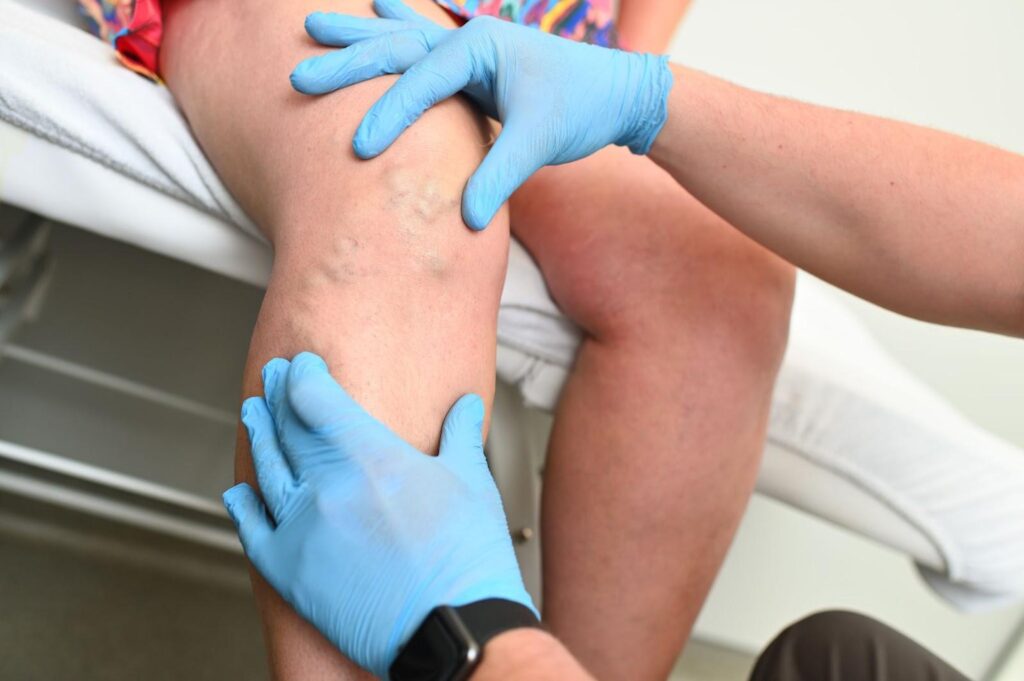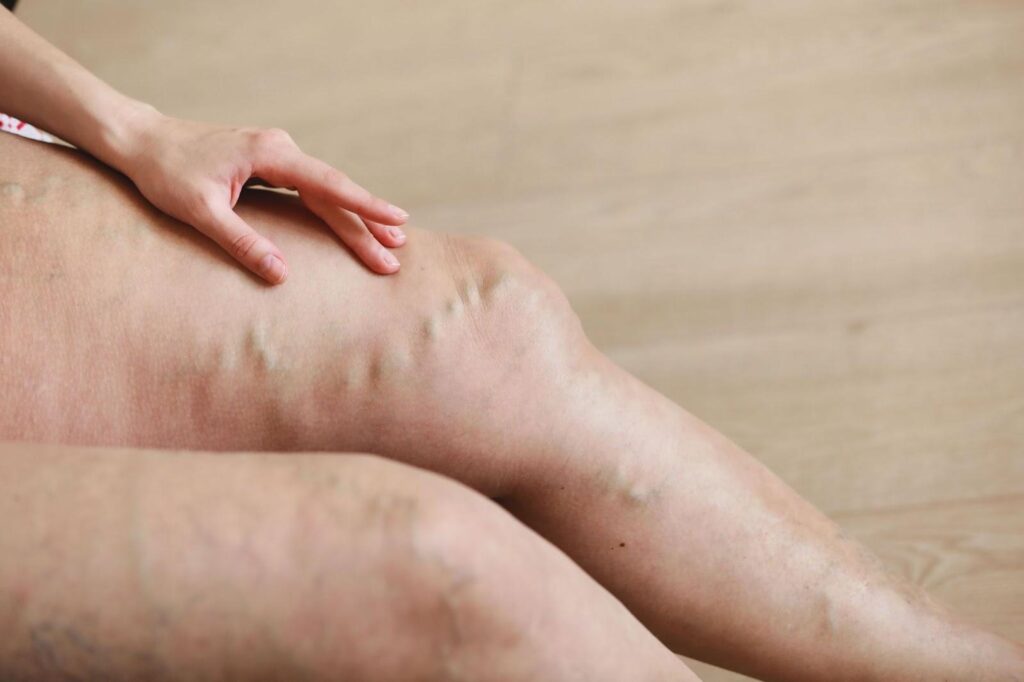Varicose veins are more than just a cosmetic issue—they can cause discomfort, swelling, and fatigue that interfere with daily life. The visible, twisted veins often impact confidence, making it hard to feel at ease in your skin. Over time, untreated varicose veins may lead to complications that affect your overall health. Advanced treatments now offer practical solutions to restore comfort and improve circulation. Understanding how these procedures work can help you make informed decisions about your health.
What Are Varicose Veins and Why Do They Occur?
Varicose veins result from blood pooling in the veins, causing them to enlarge. They often appear on the legs due to prolonged standing or pressure. This condition develops when vein valves fail to function correctly. As blood flows backward, it creates the visible swelling and twisting associated with varicose veins.
Causes and Risk Factors of Varicose Veins
Several factors contribute to varicose veins, including age and genetics. Weak vein walls and valves are often inherited traits. Lifestyle choices, like sitting or standing for long periods, increase the likelihood. Obesity adds pressure on the veins, worsening the condition. Hormonal changes during pregnancy or menopause also raise the risk.
Common Symptoms of Varicose Veins
Varicose veins are more than a visible concern. They often come with a range of symptoms that affect comfort and mobility. While some people may only notice the appearance, others experience physical discomfort that interferes with daily life.
Early Signs of Varicose Veins
The earliest signs of varicose veins include mild swelling and visible veins. People may notice a feeling of heaviness or tiredness in their legs, especially after standing for long periods. Some individuals experience itching or slight discoloration around the affected veins. Identifying these signs as early as possible can help prevent the condition from worsening.
Advanced Symptoms That Require Attention
As varicose veins progress, symptoms may become more pronounced and painful. Bulging, twisted veins become more visible and are often accompanied by aching or throbbing. Swelling in the legs and ankles may occur, especially at the end of the day. Severe symptoms like ulcers or blood clots require immediate medical intervention.
Why Seek Varicose Vein Removal?
Varicose veins are more than a cosmetic concern. While some may tolerate their appearance, untreated veins can escalate to serious health issues. Symptoms like aching, swelling, or skin changes often worsen without intervention. Timely removal prevents complications and restores quality of life.
Health Risks of Untreated Varicose Veins
Untreated varicose veins can lead to severe conditions like venous ulcers. These open sores develop when poor blood flow damages the skin. Blood clots, or thrombosis, may occur in enlarged veins, posing significant risks. Chronic swelling can also lead to skin discoloration and irritation. Addressing varicose veins early on avoids these complications.
Understanding Varicose Vein Removal Procedures
Varicose vein removal involves medical procedures to address problematic veins and restore healthy blood flow. These treatments target damaged veins, reducing symptoms and improving circulation. Modern medicine offers several methods, ranging from non-invasive techniques to surgical solutions. Each approach is tailored to the severity of the condition and individual needs:
Sclerotherapy: A Simple, Effective Option
Sclerotherapy involves injecting a unique solution called a sclerosant into the affected vein. This solution irritates the vein walls, causing them to collapse and close. Over time, the body absorbs the treated vein, reducing symptoms. This technique is ideal for smaller varicose or spider veins and is performed quickly with minimal recovery time.
Endovenous Laser Therapy (EVLT)
Endovenous laser therapy uses laser energy to seal varicose veins. A tiny fiber is inserted into the vein, delivering heat to damage and closing it off. The procedure is performed under local anesthesia and is precise, targeting medium-sized veins. EVLT offers effective results with a shorter recovery period compared to traditional surgery.

Radiofrequency Ablation (RFA)
Radiofrequency ablation uses heat generated by radiofrequency energy to treat more prominent varicose veins. A catheter is inserted into the vein, heating its walls and sealing it shut. The body reabsorbs the collapsed vein, and blood reroutes to healthier veins. RFA is minimally invasive and involves little to no downtime.
Foam Sclerotherapy for Larger Veins
Foam sclerotherapy is a variation of traditional sclerotherapy. It uses foam sclerosant to treat more prominent veins. The foam fills and blocks the vein, causing it to collapse. This procedure is often chosen for medium-to-large veins and provides visible results quickly. It’s an outpatient procedure with minimal discomfort and recovery time.
Vein Stripping and Ligation
For severe varicose veins, vein stripping, and ligation are surgical options. These methods involve tying off and removing damaged veins through small incisions. They are effective for large, deep veins causing significant symptoms. While recovery takes longer, these techniques provide permanent relief for advanced cases.
Benefits of Modern Varicose Vein Removal Treatments
Modern varicose vein treatments offer numerous advantages, improving health and quality of life. These procedures address functional issues, boost confidence, and prevent complications. Patients enjoy faster recovery times, less pain, and more effective results than traditional methods.
Faster Recovery and Minimal Discomfort
Today’s varicose vein treatments are designed for convenience and comfort. Procedures like sclerotherapy and EVLT are minimally invasive, requiring no major incisions. Patients can often return to their regular routines within a few days. Unlike traditional surgeries, recovery is faster and less painful, improving the overall experience.
Improved Aesthetic and Health Outcomes
Varicose vein removal not only relieves symptoms but also enhances appearance. Treatments significantly reduce or eliminate the visibility of bulging veins. Improved blood circulation alleviates heaviness, swelling, and fatigue in the legs. These changes contribute to both better health and increased confidence.
Enhanced Mobility and Daily Comfort
Removing varicose veins leads to greater comfort in everyday activities. Many patients find walking, exercising, and standing more manageable. Pain and heaviness in the legs are significantly reduced after treatment. This improvement in mobility enhances quality of life and overall well-being.
Prevention of Future Complications
Treating varicose veins helps avoid severe medical issues that can arise. Conditions like venous ulcers, deep vein thrombosis, or chronic swelling are less likely. Timely intervention prevents the worsening of symptoms, reducing long-term health risks. Addressing the problem ensures healthier veins and better outcomes.
H3: Boosted Confidence and Emotional Well-Being
Visible varicose veins can affect self-esteem and limit clothing choices. Treatments restore confidence by eliminating these noticeable veins. Patients feel more comfortable wearing shorts, dresses, or swimwear without concerns. This boost in confidence often leads to an overall improvement in emotional health.
Better Sleep and Overall Comfort
Nighttime discomfort caused by varicose veins disrupts sleep and rest. Treatments reduce or eliminate leg cramps and aching sensations that disturb sleep. Patients report better rest and increased energy after the procedures. Improved sleep quality enhances overall comfort and daily functioning.
Long-Term Cost Savings
Early treatment can help save money by reducing future medical expenses. The costs of compression stockings, medications, and managing complications increase over time. Varicose vein removal addresses the problem at its source, eliminating recurring expenses. It’s an economical choice that provides lasting health benefits.

How to Prepare for Varicose Vein Removal
Preparation plays a crucial role in ensuring a successful treatment. Patients should undergo consultations to discuss their medical history. Pre-treatment steps may include diagnostic imaging and lifestyle adjustments. A proactive approach ensures smooth procedures and optimal recovery.
Pre-Treatment Consultations and Tests
Doctors assess vein conditions through ultrasounds or vein mapping. These tests identify problematic veins and determine treatment suitability. Sharing your medical history, including medications, is essential. Discussing expectations and concerns with your doctor builds confidence in the process. Clear communication sets the stage for effective treatment.
Lifestyle Adjustments Before the Procedure
Small changes before treatment can improve outcomes. Maintaining a healthy weight reduces the strain on veins. Avoiding prolonged standing or sitting enhances circulation. Compression stockings may be recommended to alleviate symptoms. Proper preparation minimizes risks and improves results.
Post-Treatment Care and Recovery for Varicose Vein Removal
Post-treatment care focuses on recovery and preventing recurrence. Following medical advice ensures a smooth healing process. Patients must manage pain and swelling while maintaining circulation. Long-term vein health depends on adopting healthier habits.
Managing Pain and Swelling After Treatment
Pain and swelling are common after vein procedures. Compression stockings provide support and reduce swelling. Elevating the legs promotes blood flow and eases discomfort. Over-the-counter pain relievers can alleviate mild pain. Following these measures supports faster recovery.
Long-Term Maintenance for Healthy Veins
Healthy habits help prevent varicose veins from returning. Regular exercise improves circulation and vein strength. Maintaining a balanced diet keeps weight under control. Avoiding prolonged standing or sitting minimizes vein strain. Staying consistent with these practices ensures lasting results.
When to Consult a Specialist for Varicose Vein Removal
Some symptoms signal the need for immediate medical attention. While varicose veins are often manageable, complications can arise. Identifying warning signs early on prevents serious health issues. Consulting a specialist ensures timely intervention and effective care.
Symptoms That Require Urgent Attention
Seek help if you experience sudden leg swelling or pain. Changes in skin color around the vein may indicate clots. Open sores or ulcers near the veins require medical evaluation. Persistent heaviness or discomfort warrants a professional opinion. Promptly addressing these symptoms avoids complications.
Transform Your Health With Varicose Vein Removal
Your veins are vital in keeping you active and vibrant, yet varicose veins can weigh you physically and emotionally. Addressing them isn’t just about appearance—it’s about reclaiming your comfort, confidence, and quality of life. Modern treatments are safer, faster, and more effective than ever, allowing you to move forward without pain or hesitation. Don’t let discomfort hold you back; take the first step toward healthier veins and a brighter future by exploring your options with a trusted specialist today.
Your journey to confidence starts here—check out the Pure Beauty Center of Fort Lauderdale blog for more information!


